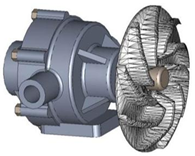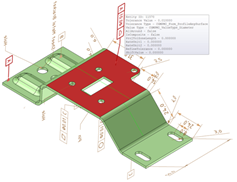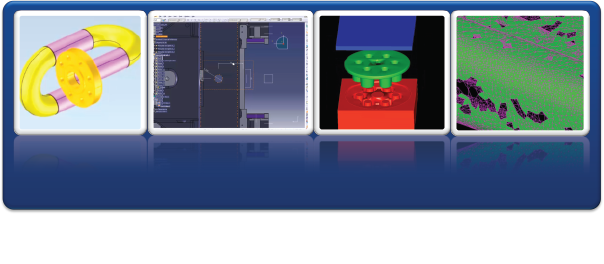A significant challenge of our work is to solve complex problems for the many changes happening in our industry today. Spatial customers across a broad range of industries have relied upon our 3D software development toolkits over the course of years, and have collaborated with us to develop solutions that solve problems in their application domain. A result of this collaborative effort is our latest 2016 1.0 release, which offers significant new products, functional enhancements, and version updates for our valued customers.
Within the manufacturing domain, our products for modeling and interoperability have traditionally been used for subtractive manufacturing. With the 2016 1.0 release, CGM Polyhedra™ will allow our manufacturing customers build hybrid applications by combining both additive manufacturing and subtractive manufacturing.

CGM Polyhedra enhances the power of core ACIS modeling kernel by allowing the 3D ACIS Modeler to extend beyond exact geometry to include both exact and non-exact geometrical representations. Applications using the 3D ACIS Modeler for all their precise modeling requirements can also use the same 3D ACIS Modeler API infrastructure for their non-exact geometry workflows.
Imagine importing a standard CAD file with 3D InterOp, along with an STL file and performing ACIS operations such as Boolean, offsetting, slicing, and decimation on this combination – this is what the Hybrid modeling environment in 2016 1.0 will allow your application to do. CGM Polyhdera allows applications to avoid the complexities of managing exact / non-exact data structures separately by leveraging the power of the 3D ACIS Modeler to maintain both representations within the same environment.
A major portion of our modeling efforts over the past couple of releases have been to build technologies that improve the process automation for our customers’ building manufacturing and measurement applications. To that effect, 2016 1.0 lets applications leverage our improvements in feature recognition with not only detection of topology as feature owners, but also the navigation parameters which define these features. Our customers in the domain of model-based engineering will be able to leverage improvement s in both graphical and semantic PMI, allowing them to import exact visual fidelity for drawing annotations similar to the authoring CAD system, along with full associativity with owning geometry.
Programming interfaces for software components that are embedded in other applications need to be intuitive for reducing the time required for integrating these components. In 2016 1.0, new customers building applications with our software development toolkits will see enhanced support for debugging mechanism and quick prototyping of functional ideas, along with improvements to the documentation of our technical articles.
 A primary driver of the 3D InterOp roadmap is to enable CAD data re-use for dowstream engineering workflows. Our customers in the domain of design, analysis, manufacturing, and measurement rely on 3D InterOp for the quality of incoming geometry and to ensure sucessful geometrical operations on imported data. 2016 1.0 continues the same trend for 3D InterOp, along with significant functional enhancements directed at domain specific workflows. Analysis applications using 3D InterOp can now rely upon the FACE permanent identifiers retured by InterOp for verifying the design changes as part of their simulation driven design process. Along with support for the latest CAD file format versions, 2016 1.0 will also allow CAM applications to import exact manufacturing hole features and threading data for optimizing manufacturing plans.
A primary driver of the 3D InterOp roadmap is to enable CAD data re-use for dowstream engineering workflows. Our customers in the domain of design, analysis, manufacturing, and measurement rely on 3D InterOp for the quality of incoming geometry and to ensure sucessful geometrical operations on imported data. 2016 1.0 continues the same trend for 3D InterOp, along with significant functional enhancements directed at domain specific workflows. Analysis applications using 3D InterOp can now rely upon the FACE permanent identifiers retured by InterOp for verifying the design changes as part of their simulation driven design process. Along with support for the latest CAD file format versions, 2016 1.0 will also allow CAM applications to import exact manufacturing hole features and threading data for optimizing manufacturing plans.
Our goal with 2016 1.0 was to incorporate functional feedback from our customers and colloaborate with them in solving specific application requirements. There is a quite an amount of functionality delivered by the product development team over the course of this release development cycle. So, for all Spatial customers, we cannot wait for you to integrate 2016 1.0 and benefit from all these product enhancements, as well as our new product introduction.



















